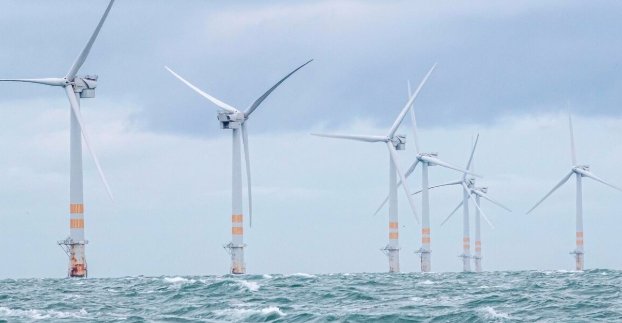Scotland’s energy transition has the potential to lead the way to a cleaner, greener future. Yet, as it stands, the shift toward renewable energy seems to be leaving Scots behind. The promise of sustainable jobs, community revitalization, and genuine local benefits remains mostly unfulfilled. How can we reshape this transition to work for all of Scotland?
A Different Path: Learning from Norway’s Example
Fifty years ago, Norway, like Scotland, faced a new energy opportunity: oil. Unlike Scotland, Norway took a very different approach to ensure that its people reaped the benefits. The Norwegian model didn’t just look at profits; it was a system designed to benefit the nation and its future.
The country owned its oil resources, developed infrastructure that benefited local supply chains, and imposed fair taxation to ensure its people shared in the bounty. Communities, no matter how small, saw investment in infrastructure, schools, and social development. By creating an Oil Fund, Norway not only secured wealth for its people but also set up sustainable foundations for future generations.
Could Scotland replicate this model? Instead of benefiting from its own natural resources, Scotland has built a system where foreign-owned private corporations benefit from wind, solar, and other renewables. Scottish workers and businesses see limited benefit. And instead of using the revenue to develop local industries, the proceeds often disappear into Westminster coffers or are used to plug holes in Scotland’s own budget.

The Green Transition: A Broken Promise?
As Scotland ramps up its renewable energy projects, the promise of a better future seems out of reach for many Scots. Instead of seeing jobs and infrastructure growth, communities often face rising energy bills, while profits from renewable energy go to distant investors.
Despite Scotland being a leader in renewable energy production, it often feels as though the country isn’t getting much in return. Local supply chains remain underdeveloped, and Scotland’s energy bills are among the highest in Europe. The wealth generated by wind and solar energy seems to benefit everyone but the Scots themselves.
Even the renewable projects, such as wind farms, often come with an unbalanced price tag for local communities. The infrastructure projects frequently do little to ensure that locals are the ones benefiting in terms of jobs, education, and future opportunities. This disparity has led to growing frustration.
Here’s the stark reality:
- High domestic energy bills: Scottish consumers are often burdened with some of the highest costs in Europe.
- Limited local job creation: While renewables are booming, the jobs often go to foreign labor or highly skilled workers from outside Scotland.
- Revenue flowing elsewhere: Instead of reinvesting profits in local communities, much of the revenue from renewables is siphoned off.
The contrast with Norway could not be starker. In Norway, the population’s well-being was at the center of their energy transition. In Scotland, it feels as though the rich get richer while the Scots continue to suffer.
Lessons from History: The Perils of the Extractive Economy
Scotland’s industrial past holds both lessons and warnings. From coal mines to shipyards, Scotland once had a thriving industrial base that provided jobs, wealth, and community development. But waves of privatization and deindustrialization have left many regions struggling.
Scotland’s offshore oil industry was once a source of pride, providing jobs and economic benefits. However, much of that wealth has since been drained by foreign-owned corporations. Meanwhile, Scotland now imports much of its gas and oil from places like Norway and the US, where those nations control production and profit.
We have seen similar struggles elsewhere, notably in the northern Netherlands with the Groningen gas field. Despite the vast wealth generated from the field, the local communities remained poor. When extraction-induced seismic activity began to damage homes and buildings, the response was dismissive and technocratic. The result was widespread devastation for the locals, with the government and private corporations showing little interest in protecting their interests.
In Scotland, the green transition risks repeating these mistakes. If energy profits continue to flow elsewhere, without significant benefits for local communities, the backlash will only grow stronger. We must do better.
Reclaiming the Future: A Vision for a Just Transition
It’s not too late for Scotland to change course. Instead of relying on foreign corporations and distant investors, we can refocus our efforts on ensuring that every Scot benefits from the green transition. This doesn’t mean rejecting progress; rather, it means taking a more inclusive approach.
- Empowering communities: Communities should not just host renewable energy projects—they should benefit directly from them. This means jobs, local supply chains, and infrastructure development.
- Investing in the future: Revenue from Scotland’s energy resources should be reinvested into local development, education, and services. A renewable energy fund could help future-proof Scotland, just like Norway’s Oil Fund.
- Engaging citizens: Scotland’s energy future shouldn’t be decided by technocrats alone. Citizens must have a voice in shaping the direction of the transition.
Imagine a Scotland where the green transition truly benefits everyone. Where energy jobs are local, where profits stay in the community, and where future generations inherit a strong, sustainable economy. It’s possible. But it requires a radical rethinking of the way we approach energy policy.


















